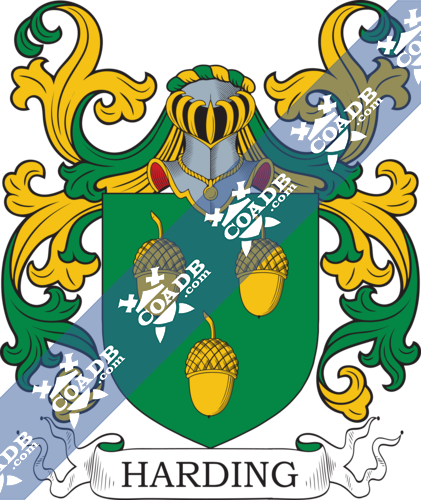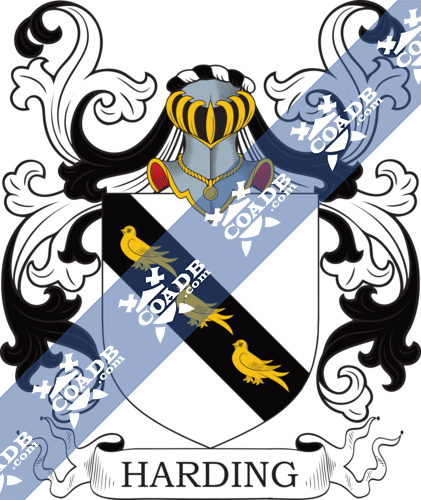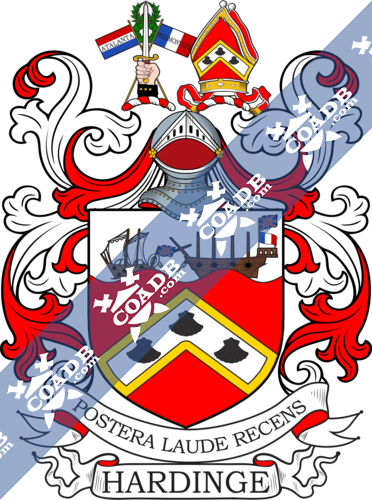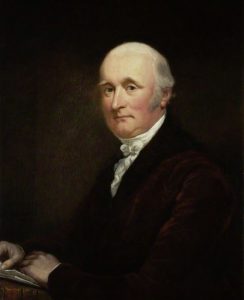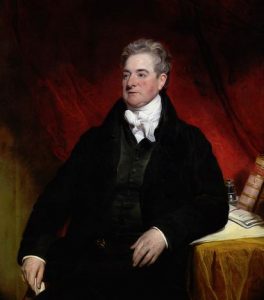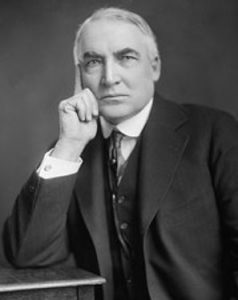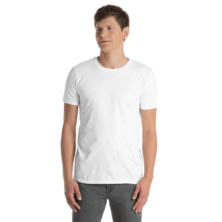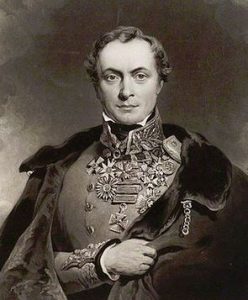Harding Family Crest, Coat of Arms and Name History
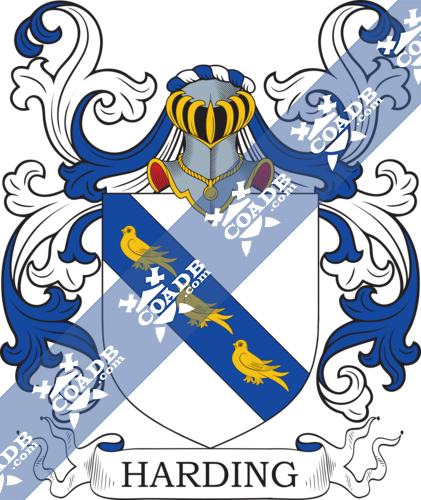
Harding Coat of Arms Gallery
Don’t know which Coat of Arms is yours?
We can do a genealogical research. Find out the exact history of your family!
Learn MoreHarding Surname Name Meaning, Origin, History, & Etymology
Harding is a primarily southern English, southern Welsh, and Irish last name that derives from the Old English personal (first) name Hearding, which itself was originally a patronymic (son of) from the name Hard. The name made its way into Ireland during the 1400s AD. It can also be a Dutch or North German name, a shortened form of various Germanic names that all begin with the word hard, meaning hardy, strong, or brave, perhaps referring to a person with such attributes. In medieval times or the Middle Ages, a Viking family (Vikings, from Scandinavia had raided the coast of the British Isles) bore this surname. In summary, the names to appear Germanic or Anglo-Scandinavian in origins. This Nordic or Teutonic name is still very popular today, ranking in the top 1,000 most common last names in the following countries: United States, England, Scotland, Wales, Ireland, Canada, New Zealand, Australia and South Africa.
The following website offers an interesting story or saga in regards to this surname: “King Harding ruled Hardanger in the time of the Vikings (c.900ad) and lived in Kinsarvik. During a crusade to eastern England in 900ad King Harding was captured by the English and put in a prison tower. The Hardings liked their King and decided to rescue him. They equipped a Viking ship, called Hardinggeita (lit. “The Harding ship”) to set sail to England and set their King free. The Hardings painted one side of the ship white and the other side black. When they approached the English shore they did so with the white side facing towards the shore after which they managed to get to the prison tower and switched the king with an old man dressed like the king. Then they set sail and made their escape but with the black side of the ship facing the shore. The English did not recognize them as the invaders as they were looking for a white ship. The saga ends with King Harding returning safely to Kinsarvik, Hardanger.”
The websites also offers the following interesting theory: “There seems to be two sources which may be linked, one from Norway – the Hardanger Fjord, where people are still called “Hardings” or “Hardinger” (Viking times: “Hardingar”): the dialect of the people from this area is known as Hardingmål. The other as Danish/Angle hordes where they were recorded in the Anglo Saxon Rune Poem as the Germanic warrior tribe “Heardingas”. Both groups may have originated from the same source – the Charudes of the Jutland peninsula, who under pressure of expanding groups around them moved to Horderland/Hardanger area where they became the Horders or Hardinger”.
The name Harding was present in the literature and mythology of several cultures. For examples, in Icelandic stories, they were called the “Haddings”, and had a leader named Hadding who was protected by the gods Odin and Thor.
Spelling Variations
Some spelling variants or names with similar etymologies include Hardin, Hardinge, Hardings, Hearding, Hardding, Hartding, and others.
Popularity & Geographic Distribution
The last name Harding ranks 823rd in popularity in the United Status as of the 2000 Census. The name ranks particularly high in the following four states: Delaware, Utah, and Maryland.
The surname Harding frequency/commonness ranks as follows in the British Isles: England (164th), Scotland (655th), Wales (134th), Ireland (759th) and Northern Ireland (1,105th). In England, it ranks highest in counties Buckinghamshire, Wiltshire, and Hampshire. In Scotland, the surname ranks highest in Wigtownshire. In Wales, it ranks highest in counties Montgomeryshire and Radnorshire. In Ireland, it ranks highest in county Kilkenny. In Northern Ireland, it ranks highest in county Antrim. The name is also present throughout the remainder English speaking world: Canada (604th), New Zealand (246th), Australia (235th), and South Africa (690th).
Henry Brougham Guppy’s 1890 book Homes of Family Names in Great Britain states the following in regard to this last name: “Mostly confined to the south – west of England, being at present best represented in Somerset and Wilts. Its disconnected occurrence in other parts of England is, however, noticeable”.
Early Bearers of the Surname
The Hundred Rolls of 1273 AD, a census of Wales and England, known in Latin as Rotuli Hundredorum lists two bearers of this surname: Hugh Harding in Cambridgeshire and Nicol Harding in Oxfordshire. Robert filius (son of) Harding and Maurice filius Harding are both documented in the Rotulo Litterarum Clausarum in Turri Londinesi. The Fine Roll of 1161 AD lists one Nicholas filius Hardinge. The Poll Tax of Yorkshire lists Johannes Hardyng and Thomas Hardyng in 1379 AD.
Harding Family Tree & Harding Genealogy
The following is a discussion of seven different noble, royal, landed, or aristocratic families bearing this last name.
Harding of Baraset
The lineage or ancestry of this branch of the Harding family tree traces back to Judd Harding who was born in 1662. He married Susanna, daughter of William Arden of Hampton, and had a son with her, also named Judd. This Judd was born in 1692. He also had a son named Judd. This son, Judd Harding, was an Esquire of Solihull, county Warwick, a Justice of the Peace, and a Captain of the Warwickshire militia, who was born in 1730. He married Elizabeth Hunt, of Stratford-on-Avon, and had one daughter (Charlotte) and the following give sons with her: 1) Joseph (his successor at Solihull, a lawyer, had son named George), 2) William (see below), 3) John (member of Royal Artillery, second in command under the Duke of Wellington at Copenhagen, had a son named Major-General George Judd), 4) Judd, and 5) Thomas. His second son, William Harding, was an Esquire who went to India in the Civil Service, who returned to England and established an estate on which he built the mansion of Baraset in 1800. He was the Magistrate of that county and was a Gentleman of the Privy Chamber to George III. In 1784, he married Harriet Sweedland, and had issue with her as follows: 1) William Judd (of Baraset), 2) Charles (E.I.C.’s Civil Service, Bengal, married Eliza Anne Hamilton), 3) Reverend Henry (married Lady Emily Feilding, daughter of Viscount Fielding, and had a son named William Fielding, discussed more below, as well as three daughters), 4) Reverend John (married Anna, eldest daughter of Reverend Thomas Cutler of Rudston Read), 5) Francis (Captain of the Royal Navy, married Davidona Eleanor, daughter of Brigadier General Charles Dallas, Governor of St. Helena, had children) 6) Edward (Benegal Civil Services, died in the East Indies), 7) Catherine (married W.H.C. Plowden was an Esquire, died in China), 8) Charlotte Sophia (married Reverend William Wheler, son of Reverend Sir Charles Wheler, Baronet), 9) Elizabeth Octavia (married George Baker, Commander of the Royal Navy, son of Sir Robert Baker), 10) Jane (married Reverend Thomas Hunt of Boreatton Park), 11) Harriett (married James Molony of Kiltanon), 12) Sophia (married Samuel Steward, Esquire of Lincoln’s Inn, son of Colonel Samuel Steward of Leamington). He died in 1822 and was succeeded by his son, William. This son, William Judd Harding was an Esquire of Baraset, county Warwick, Justice of the Peace, and Deputy Lieutenant who was born in 1788. In 1830, he married Elizabeth, daughter of Robert Denison of Kilnwick Percy and Frances Brooke, but died without posterity in 1867, whereupon he was succeeded by his nephew, William F. William Feilding Harding was an Esquire of Baraset, county Warwick, was a Justice of the Peace and member of the Royal Navy who was born in 1829. In 1863, he married Louisa, daughter of Reverend George Rudston Read, Rector of Sutton-on-Derwent, county York, and had issue with her as follows: 1) William Basil, 2) Henry George, 3) Arthur Hamilton, 4) Cecil Cholmley, 5) Helen Louisa, and 6) Katherine Emily. The Harding family crest of this branch of the family is blazoned in the medieval art of heraldry as follows: Ermine, a fess chequy or an azure. Crest: On a chapeau azure turned up ermine, a board passant or. They were seated at Baraset, Stratford-on-Avon, county Warwick.
Harding of Upcott
This family was seated in ancient times at Comb Martin, Devon. Thomas Harding, D.D., Fellow of New College, Oxford, was born in 1512. He was the son of this family. Later came Robert Harding. Robert and his wife Ms. Limebear, had a son named Thomas. This son, Thomas Harding, Esquire of Upcott, married Mary Bryan, and had issue with her as follows: 1) Robert (heir), 2) Thomas (had son named Reverend John Limebear Harding of Monkleigh, had sons Thomas Goldie and Reverend Joseph Limebear), 3) Reverend John, and 4) a daughter (married Thomas Terry). His eldest son, Robert Harding, was an Esquire of Ucpott, who in 1780, married Dionisia, daughter of Sir Bourchier Wrey, Baronet of Tawstock Court, and had issue with her as follows: 1) Thomas Wrey (his heir), 2) Robert (Justice of the Peace and Captain in the Royal Army), 3) William (of Upcott), 4) Reverend John (Rector of Goodleigh, born 1800), 5) Dynonisia, and 6) Anna Maria. His eldest son, Thomas Wrey, died in 1866 and was succeeded by his second brother, William. Lieutenant Colonel William Harding of Upcott House, county Devon, England, was a Justice of the Peace born in 1792. The Harding Coat of Arms for this branch of the genealogical family tree is blazoned in heraldry as follows: Argent, on a bend azure three marlets or. Crest: A falcon displayed proper. This landed/gentry family was seated at Upccot, near Barnstaple, in England (once called Great Britain).
Harding of Tamworth
The genealogy or ancestry of this branch of the Harding family tree traces back to around 1630, when they offshoot from the old Warwickshire branch, and moved from Packington to Tamworth where they procured property. In 1668, William Harding became a magistrate and was chosen to carry the charter of the Borough to London and delivery it to King James II of England. In 1669, he married Mary Pickard, and had a son with her named William. This son, William Harding, was an Esquire who in 1694, married a first cousin of Thomas Guy (founder of Guy’s Hospital), and had a son, also named William. This William Harding, Esq. married Mary, daughter of John Bradburn of Winchester, and had an only son with her, also named William. This William Harding, Esq. was born in 1750. He married Martha, daughter of Samuel Tuffley of Leicester, and had children with her as follows: 1) William (see below), 2) Thomas (died in Hamburgh), 3) Charles (of Bole Hall, married Ellen Willock, had issue named Anne, Ellen, Charlotte, Mary, Emily, and Frances Augusta), 4) Samuel Tuffley (of Manchester), 5) John (a banker, of Bridlington, county York, England). William Harding was an Esquire of Copeley Lodge, county Warwick, was born in 1778. In 1800, he married Rebecca, daughter of Samuel Pemberton of the Laurels and his wife Mary, and they had two children together: William Sextus (born 1806, married Anne, daughter of Charles Harding of Bore Hall) and Caroline (married Henry Talbor of French House). The coat of arms is blazoned as follows: Azure, a fesse argent, between three fleurs-de-lis, or. Crest: A fox, sejant. The family was seated at Copeley Lodge, county Warwick.
This pedigree begins with Reverend Hardinge, Rector of Stanhope, who was a member of the Baronet Hardinge family. He had a son named Henry Hardinge, 1st Viscount Hardinge, who was born at Wrotham, county Kent, in England in 1785. He entered the British army and rose through the ranks. He served in the Peninsular War and was wounded at Vittoria and Blucher at Ligny. After this, he held numerous positions, including Chief Secretary of Ireland, Secretary at War, and Governor General of India in 1844. He fought a rebellion of the Sikhs there in 1848. He was created Viscount in 1846. He was a Colonel of the 57th Regiment of Foot and held one cross and five clasps for his service. He was a Knight of orders in Prussia, Holland, Portugal, and Spain. He was a member of the House of Commons in 1820. In 1821, he married Lady Emily Jane, daughter of the 1st Marquess of Londonderry, and had four issue with her as follows: 1) Charles Stewart, 2nd Viscount (see below), 2) Sir Edward Arthur (General in the Army, Colonel of the Coldstead Guards, Commander in Bombay Army from 1881-1885, Governor Gibraltar from 1886-1890, married Mary Georgiana Frances, daughter of Colonel A.F. Ellis, had issue named Sir Arthur Henry, Alberta Mary, Mary, and Alice), 3) Francis Elizabeth (married General Sir Arthur Thurlow Cunynghame, son of Sir David, had issue), and 4) Emily Carolina (died 1876). He died in 1856 and was succeeded by his elder son, Charles. Charles Stewart Hardinge, 2nd Viscount Hardinge, was a Deputy Lieutenant, Colonel of the 1st Volunteers Bn. R. West Kent Regiment, and a Member of Parliament from Downpatrick, who was born in 1822. In 1856, he married Lavinia, daughter of 3rd Earl Lucan, and had children with her as follows: 1) Charles Henry (3rd Viscount), 2) Charles (created Baron Hardinge of Penshurst, see next section), 3) Arthur Stewart (Major of the Royal Scots Fusiliers), 4) Robert Nicholas (born 1863, married Mary, daughter of Sir Robert Lynche-Blosse, 10th Baronet, had a son named Patrick Robert who was a Major of the Cameronians Scottish Ridles who served in World War I), 5) George Arthur (Captain of the Royal Navy, born 1864), 6) Lavinia, 7) Emily Maude (married George Hanbury Field of Ashurst Park), and 8) Mary Hilda Madelina (married Reverend Ernest Wild, Rector of Barming, Maidstone, had issue). He died in 1894 and was succeeded by his eldest son, Henry. Henry Charles, 3rd Viscount, was a Justice of the Peace and Deputy Lieutenant for county Kent, England who also served in the Nile Expedition. He was born in 1857. He was also a Colonel of the 6th Bn. Rifle Brigade and a Captain of the Rifle Brigade. In 1891, he married Mary Frances, daughter of Ralph Nevill, and had four children with her as follows: 1) Lieutenant Henry Ralph (born 1895, killed in action in May of 1915), 2) Caryl Nicholas Charles (4th Viscount), 3) Ruby (Justice of the Peace, in 1928 she married Major-General Frederick George Beaumont-Nesbitt, had issue), and 4) Sybil Mary (married the 4th Baron Penrhyn and later Lieutenant Colonel Denzil George Fortescue). He died and was succeeded by his son Carly in 1924. Caryl Nicholas Charles Hardinge, The 4th Viscount Hardinge, of Lahore, and King’s Newton, county Derby, was born in 1905 and educated at Harrow and R.M.C. He was a Lieutenant of the 7th Hussars, was a member of the London Stock Exchange, and the A.D.C. to Governor-General of Canada from 1926-1928. In 1928, he married Margaret Elizabeth Arnot, daughter of Hugh Fleming or Wynyards, Rockville, Ottawa, Canada, and had three children with her as follows: Henry Nicholas Paul (1929), Carolyn Mary Wynyard (1932), and Gay (born 1938). The line continued:
Henry Nicholas Paul Hardinge, 5th Viscount Hardinge (1929–1984)
Charles Henry Nicholas Hardinge, 6th Viscount Hardinge (1956–2004)
Andrew Hartland Hardinge 7th Viscount Hardinge (1960–2014)
Thomas Henry de Montarville Hardinge, 8th Viscount Hardinge (born 1993)
Jamie Alexander David Hardinge (heir presumptive, born 1996)
The Hardinge family crest is blazoned in heraldry (an art very popular in the Middle Ages and well into the 20th century) as follows: Gules, on a chevron argent, fimbriated as in the arms. Supporters: On either side a lion proper, that on the dexter morally crowned or, and supporting a flagstaff proper, therefrom flowing to the dexter a flag or; and that on the sinister side crowned with an eastern crown, supporting a like staff, therefrom flowing to the sinister, a flag, also or. Motto: Mens aequa rebus in arduis. They were seated at South Park, Penshurt, Kent, England in present day United Kingdom.
Sir Robert Hardinge of King’s Newton, a Master in Chancery, raised a Royalist Troop of Horse in the reign of King Charles I of England, and also entertained Charles II at King’s Newton Hall. He was knighted in 1674. He married Anne, daughter of Sir Richard Sprignell, Baronet, and died 1679, leaving, with other issue: 1) Robert, of King’s Newton, and 2) Reverend Gideon (Vicar of Kingston in Surrey, had issue named Nicholas, Caleb, and Mary. His grandson, Nicholas Hardinge, was a Barrister-at-law, Clerk of the House of Commons, Secretary of the Treasury, and Member of Parliament for the Borough of Eye who was born in 1669. In 1738, he married Jane, daughter of Sir John Pratt, and had the following children: 1) Sir Charles (2nd Baronet), 2) Reverend Henry (Rector of Stanhope in Durham, married Frances, daughter of James Best, had issue named a) Sir Charles, 2nd Baronet, b) George Nicholas, Captain of the Royal Navy, born 1781, fell in action while in command of the H.M.S Fiorenzo after capturing the Piedmontaise frigate, c) Henry(1st Viscount Harding), d) Richard, Major-General, Royal Army, married Anne Papillion, had issue named Lieutenant Colonel Henry and Frances Anne, later married his second wife Caroline Johnson Callander, had issue with her named Major George Nicholas, e) Edward, Admiral of the Royal Navy, f) Bradford who married Caroline Jane Christina and had a son named George Nicholas, g) Herbert Richard, Lieutenant Colonel of the 32nd Regiment who married a daughter of William Adair Bruce, and h) Emma Augusta, a twin to Herbert), 3) Sir Richard (1st Baronet), 4) Jane (born 1740, married Henry Cresset Pelham of Crowhurst), 5) Caroline, and 6) Juliana. His son, Sir Richard Hardinge, 1st Baronet, of Belleisle, Fermanagh, was born in 1756 and created a Baronet in 1801. In 1793, he married Mary, daughter of Ralph Fore, Earl of Ross, and later Caroline Munster, daughter of Major-General Wulff. He died without posterity in 1826 and was succ.eeded by his nephew, Charles. Reverend Sir Charles Hardinge, 2nd Baronet, was born in 1780. In 1816, he married Emily Bradford, daughter of Kenneth Callander of Craigforth, county Stirling, Scotland, and had the following issue with her: 1) Sir Henry Charles (3rd Baronet), 2) Sir Edmund Stracey (4th Baronet), 3) Robert James (married Martha, daughter of Major Sadlier of Sopwell Hall, Kingston Canada, had issue named Charles Kerkomer, Edmond Cecil, and Emily Bligh), and 4) Caroline Bradford (married Ven. R.W. Browne, Archdeacon of Bath and Canon of Wells). He died in 1864 and was succeeded by his son, Henry. Sir Henry Charles Hardinge, 3rd Baronet, was born in 1830. He died in 1873 and was succeeded by his brother, Edmund. Sir Edmund Stracey Hardinge, 4th Baronet, was a Justice of the Peace and Deputy Lieutenant who was born in 1833. In 1877, he married Evelyn Stuart, daughter of Major-General Evan Maberly, and had the following issue with her: Sir Charles Edmund (5th Baronet), Evelyn Violet, Marion Laura, and Muriel Emily (married John Christie MacLeod of Duncaple, Westend). He died in 1924 and was succeeded by his son Charles. Sir Charles Edmund Hardinge, 5Th Baronet, was born in 1878 and educated at Harrow and Trinity College, Cambridge. He died in 1920. He married Evelyn Stuart Maberly. The coat of arms of this family is blazoned as follows: Gules, on a chevron argent, fimbriated or, three escallops sable, and as an honourable augmentation, on a chief wavy, of the second, a frigate, wholly dismasted, with the French flag flying beneath the British ensign, towed towards the dexter by a frigate of apparently inferior forces in a shattered state, the British colours hoisted all proper. Crests: 1) A dexter hand, couped above the wrist, vested in the uniform of a British Naval Office and grasping a sword proper, pomel and hilt or, surmounting, a Dutch, and French flag in saltire; on the former inscribed “Atalanta” on the latter “Piedmontaise”; the blade of the sword passing through a wreath of laurel near the point and a little below through another of cypress, all also proper, 2) (Hardinge) a mitre gules, garnished or, thereon a chevron, charged and fimbriated, as in the arms. Motto: Postera laude recents. They resided at Daleham Gardens.
Harding of Australia
George Rogers Harding was of St. John’s Wood, Ashgrove, Brisbane, Queensland Australia. He was a Justice of the Supreme Court of Queensland, and was at times, Chief Justice. He was born in 1838 at Taunton, county Somerset, England. In 1861, he married his first wife, Emily, daughter of Thomas Morris of Stone House. In 1889, he married his second wife, Isabella, daughter of John Grahame of Sherbourne Lodge in Sydney. He had issue, including four sons: George Rogers (1868), Walter Charles (1870), Francis Arandel (1872), and Thomas William Amyas (1882). He attended Magdalen College, Cambridge and was called to the bar at Lincoln’s Inn in 1861. He arrived in Queensland, Australia in 1866.
The lineage or pedigree of this branch of the Hardinge family tree begins with Charles Steward, 2nd Viscount Hardinge. His second son was Charles, 1st Baron Hardinge of Penshurst. He was born in 1858. He held numerous positions throughout the British Empire (ex. Secretary of Embassy at St. Petersburg and Viceroy of India from 1910-1917). In 1890, he married Winifred Selina Sturt, daughter of the 1st Baron Alington, and had children with her as follows: 1) Edward Charles (Lieutenant of the 15th King’s Hussar, wounded in World War I), 2) Alexander Henry Louis (2nd Baron), and 3) Diamond Evelyn Violet (married Major Robert Alexander Abercromby in 1823). He was sworn of the Privy Council of Great Britain in 1904, and was reasied to the Peerage in 1910, as Baron Hardinge of Penshurst. Sir Alexander Henry Louis Hardinge, the 2nd Baron Hardinge of Penshurst, of county Kent, England was born in 1894. He was a Major of the Grenadier Guards, Viceroy of India in 1915-1916, and Private Secretary to King Edward VIII in 1936 and to King George VI from 1936-1943. In 1921, he married Helen Mary, daughter of late Lord Edward Cecil, and had the following issue with her: 1) George Edward Charles (born 1921, married Janet Christine Goschen, daughter of Lieutenant-Colonel Francis Cecil Campbell Balfour of The Cleeve, had issue named Julian Alexander and Hugh Francis, 2) Winifred Mary (served in World War II as a nurse, married Lieutenant John Anthony Jerningham Murray, had issue), and 3) Elizabeth Rosemary (joined W.R.N.S). The line continued:
George Edward Charles Hardinge, 3rd Baron Hardinge of Penshurst (1921–1997)
Julian Alexander Hardinge, 4th Baron Hardinge of Penshurst (born 1945)
Hugh Francis Hardinge (heir presumptive, born 1948)
The Hardinge coat of arms is blazoned as follows: Gules, on a chevron argent, fimbriated or, three escallops, sable; and as an honourable augmentation, on a chief wavy, of the second, a frigate, wholly dismasted, with the French flag flying beneath the British ensign, towed towards the dexter by a frigate of apparently inferior force in a shattered state, the British colours hoisted all proper. Crests: 1) (of augmentation): a dexter hand couped above the wrist, vested in the uniform of a British naval officer and grasping a sword in saltire; on the former inscribed “Atalanta” on the latter “Piedmontaise”; the blade of the sword passing through of wreath of laurel near the point, and a little below through another cypress, chevron charged and fimbriated, as in the arms. Supporters: On the dexter side a brown bear, and on the sinister side a Bengal tiger, both proper. Morro: Pro rege et patria.
Other Harding Pedigree & Family Trees
Edward (or John) Harding was born in Chesham, county Buckinghamshire, England around 1513 AD. In 1513, he married Joan Benning, daughter of Richard Benning and Mary Vining, and had the following issue with her: Thomas, William, Richard, Margarite, Richard, Elizabeth, Mary, and John. The following is a pedigree beginning with his son Richard:
Richard Harding (born in Northampton in 1545)
John Harding (born in Norhampton, England in 1565, went to colonial America). He had the following issue: Richard, John, Lemuel, Amos, Oliver, Joseph, George, and Phebe (Brown). His son George was born in St. Mary’s London IN 1603. He married Mary Orley and had a son with her named Thomas. Thomas Harding was born in Middlesex, England around 1635. He married Anne Moseley and went to Virginia. His son, Henry Harding, was born in Heathsville, Virginia in 1664. He married Mary Jane Aldridge, and had three sons with her: Henry, William, and John. His son Henry was born in Virginia around 1690. He married Ann Belcher and had a son with her named Charles. Charles Harding was born in St. Stephen’s Parish, Stafford, Virginia. He married Rachel Lunsford and had the following children: William, Ann, Jane, Charles H., John Scott, Thomas, Moses, and George. His son, John Scott Harding, was born in Overwharton Parish, VA.
Robert Harding died in London, England in 1515 and had the following issue: Robert, Thomas, Elizabeth (Pakington), William, Antony, and Agnes (Harlowes). His son William was born in London around 1505 AD. He married Cecily Marshe and had the following issue: Helen (Browne), Frances, and Catherine (Onslow).
Early American and New World Settlers
The book Genealogical Guide to the Early Settlers, mentions nine bearers of this last name:
1) Abraham Harding (or Harden?) of Dedham, lived at Braintree, was a freeman in 1645, and was one of the founders of Medford. He died in 1655. He married Elizabeth and had issue named Abraham, John, and others.
2) George Harding of Marblehead, 1649
3) John Harding, a freeman in 1640, may have been from Weymouth, where he shared in a division of town lands in 1682.
4) John Harding of Duxbury, 1643 (may have been the same as no. 3 above)
5) John Harding of Eastman, married, in 1660, Bethia (perhaps daughter of Joseph Cook) and had the following issue with her: Martha (1662), Mary (1665), Joseph (1667), Josiah (1669), Maziah, John (1637), Nathaniel (1674), Joshua (1676), Abiah (1680), and Samuel (1685).
6) Philip Harding of Boston, MA, in 1659, married Susanna Haviland. He was at Marblehead in 1674.
7) Robert Harding, of Boston, came with Winthrop in the fleet in 1630. He married Philippa Hammond. He was a captain and selectman. He moved to Rhode Island. He later married Esther, daughter of George Willis of Hartford, and later went come and was a merchant in London.
8) Thomas Harding of Boston, 1656.
9) William Harding on New Haven, Connecticut, 1642
Elizabeth Harding, age 12, came to New England aboard the Abigall in 1635. Christopher Harding owned 100 acres of land in the territory of Greate Weyonoke, and he was recorded as living in Virginia in 1623. Other settlers in colonial America bearing this surname who came in the eighteenth century include: Conrad Harding (New York 1743), James Harding (Philadelphia 1745), and Philip Harding (Pennsylvania 1765).
In Canada, one of the first settlers bearing this last name was Michael Harding, who came to Nova Scotia in 1757. In Australia, in 1823, John and William Harding, English convicts from Buckinghamshire and Gloucestershire, respectively, came to Van Diemen’s Land (present day Tasmania) aboard the Asia. In 1824, Stephen Harding, a convict from Essex, England, came to New South Wales, also aboard the Asia. In 1842, the following bearers came to Wellington, New Zealand: John Harding, age 21, a carpenter by trade, and Emma Harding, age 30, aboard the Birman.
Early Americans Bearing the Harding Family Crest
Charles Bolton’s American Armory (1927) contains two entries for this surname:
1) Or on a bend azure 3 martlets argent, a sinister canton [azure] charged with a rose of the first bet 2 fleurs-de-lis argent Crest: a demi-buck proper attired [or] holding an anchor [of the last]. Notepaper Benjamin Fosdick Harding, Milton, Mass.
2) Argent on a bend engrailed gules a crescent bet 2 leopards’ faces; on a chief azure 3 catharine wheels or Crest: a leopard’s head couped ppr. Framed with Simes of Portsmouth, into which Hardy married. Water color in house at Petersham, Mass.
Matthew’s American Armoury and Bluebook (1907) and Crozier’s General Armory (1904) do not contains any entries for this last name.
Mottoes
I have identified nine Harding/Hardinge family mottoes:
1) Audax omnia perpeti (Boldness endures anything)
2) Non melior patribus (Not better than my ancestor)
3) Postera laude recens (Ever fresh in the admiration of posterity)***
4) Mens aequa rebus in arduis (A level head in dire straits)****
6) Piedmontaise**
7) Mens ae qua rebus in arduis (An equal mind in difficulties)
8) Vigilant and resolute (Harding of Petherton, B.)
9) Pro rege et patria (For king and country)
*In the crest of augmentation granted to this family, are a Dutch and French flag in saltire, on the former of which the name, “Atalanta”, on the latter, “Piedmontaise”, is inscribed. These words commemorate the gallantry of Captain G. Nicholas Hardinge, who when in command of H.M.S Fiorenzo, took the Dutch frigate Atalanta, and afterwards fell in action with the French frigate Piedmontaise, which he also captured.
**Captain G.N. Hardinge captured a French frigate in 1808, and her name, “Piedmontaise,” was inscribed on his crest of augmentation.
***Wreath of laurel and cypress form part of the crest of augmentation
**** or: The steadfast heart be the peril never so great
Grantees
We have 22 coats of arms for the Harding surname depicted here. These 22 blazons are from Bernard Burke’s book The General Armory of England, Ireland, and Scotland, which was published in 1848. The bottom of this page contains the blazons, and in many instances contains some historical, geographical, and genealogical about where coat of arms was found and who bore it. People with this last name that bore an Harding Coat of Arms (or mistakenly called the Harding Family Crest)
1) Hugh (or Henry) Harding, an Englishmen in a duel at Perth with William de St. Lowe, a Scothman, for bearing the same arms. St. Lowe Surrendered. Perth, 2 April 1312 AD
2) John Harding, citizen, merchant, and tailor of London, brother Robert (Alderman and Sheriff of London), son of John of Newport Pagnell, county Buckinghamshire, grant of arms and crest 30 August 1568 by G. Dethick and Cooke.
3) Robert Harding, citizen, alderman, and Sheriff of London, son of John of Newport Pagnell, August 1568, by Sir. G. Dethick, Cooke, and Flower.
4) Harding of South Molton and Torr Down, and Combe Martin, county Devon
5) Harding to Nott, of South Molton and Torr Down, and Combe Martin, county Devon, 1850s.
6) John Harding, son of Thomas, of Dowlais, county Glamorgan, Wales
7) William Harding of Leamington, county Warwick, 1879
8) Q.R. Harding of St. Anne’s Tower, Headingly, county York, 1888
9) Edward Colin Harding, son of Charles, of Salisbury, Mashonaland, South Africa, 1899
10) Reverend John Taylor Harding, son of John, of Pentwyn, county Monmouth, Wales
11) Captain Harding of the Royal Navy, son of Rector of Stanhope, Commander
12) Captain Harding of the Royal Navy, of the “San Florenzo” frigate
Notables
There are hundreds of notable people with the Harding surname. This page will mention a handful. Famous people with this last name include: 1) Aaron Harding (1805-1875) who was a US Representative from Kentucky who was born in Campbellsville and was in office from 1861-1867, 2) Abner Clark Harding of East Hampton, Connecticut (1807-1874) who served in the US House of Representatives from Illinois from 1865-1869, 3) Arthur Flowers Harding (1878-1947) who was an international rugby player born in Market Rasen, England who played for Cardiff and the London Welsh between 1901-1907, 4) Benjamin Franklin Harding (1823-1899) who was attorney born in Pennsylvania who became a US Senator from Oregon from 1862-1865 and was previously the Speaker of the Oregon House of Representatives from 1860-1861, 5) Warren Gamaliel Harding (1865-1923) who was the 29th President of the United States who was in office from 1921-1923 and was previously a US Senator from Ohio from 1915-1921, the son of George Tryon Harding, born in Blooming Grove, 6) Tonya Maxene Harding (1970) who was an American figure skater from Portland, Oregon who won a silver medal in 1991, 7) Thomas Harding (1448-1532) was an English religious dissident who while waiting to be burned at the stake, was hit on the head with a piece of wood by a spectator and died instantly, 8) Stephen Selwyn Harding (1808-1891) who was the Governor of Utah Territory from 1862-1863, born in Palmyra, New York, 9) St. Stephen Harding (1050-1334) who is a Catholic Saint who was born in Sherborne, Dorset, an English monk and abbot, one of the founders of the Cistercian Order, 10) Sir Peter Robin Harding, son of Peter Harding and Elizabeth Clear, was the Marshal of the Royal Air Force born in 1933, having served in the Gulf War, and 11) Ralph R. Harding (1929-2006) who was a member of the US House of Representatives from Idaho from 1961-1965, having previously served as a missionary for The Church of Jesus Christ of Latter-day Saints, having served in the Korean War.
Hardings in the American Revolution
Records indicate that many men with the surname Harding(e)served during the American, which should be considered a great matter of family pride. Here are a handful of examples:
1) Private Isaral Harding of Pennsylvania
2) Corporal James Harding of Virginia
3) Captain & Lieutenant John Harding of Pennsylvania
4) Major Thomas Harding or Virginia
5) Lieutenant Thomas Harding of Virginia
6) Private Benjamin Harding of Rhode Island
7) Private George Harding of Virginia
8) Private John Harding of New Jersey
9) Lieutenant John Harding of Pennsylvania
10) Sergeant Thomas Harding of Virginia
11) Private Henry Harding of Connecticut
12) Private Oliver Harding of Connecticut
Blazons & Genealogy Notes
2) (co. Kent). Per pale ar. and sa. two wolves and three cinquefoils counterchanged, a bordure per pale gu. and or.
3) (Lieut.-Col. Harding, Upcott House). Ar. on a bend az. three martlets or. Crest—A falcon displ. ppr.
4) (Baraset, co. Warwick). Erm. a fesse chequy or and az. Crest—On a chapeau az. turned up erm. a boar pass. or.
5) (Comb Martin and Upcot, co. Devon; the learned Thomas Harding, D.D., Fellow of New College, Oxford, the antagonist of John Jewell, Bishop of Salisbury, bom at Comb Martin, was a son of this family). Ar. on a bend az. three martlets or. Crest—A falcon, wings expanded.
6) (Coaley, co. Gloucester, and Rockflelds, co. Monmouth). Gu. three greyhounds in palo courant or, collared az. Crest—A demi leopard ramp, erased erm. attired and gorged with a chain or.
7) (Houldingfield co. Durham). Gu. three greyhounds courant in pale or, collared az. (another, ar.).
8) (William Harding, citizen of London. Visit. 1568). Gu. three greyhounds courant in pale or, collared az. Crest—A demi leopard ramp. erm. gorged with a collar az. bezantee, chained or.
9) (London; granted 30 Aug. 1568). Or, on a bend az. three martlets ar. a sinister canton of the second, charged with a rose of the first, betw. two fleurs-de-lis of the third. Crest—A demi buck ppr. attired or, holding an anchor of the last.
10) (Newtowne, co. Wilts). Ar. on a bend az. three martlets or.
11) Vert three acorns or.
12) Ar. a saltire engr. az.
13) (Robert Harding, Treasurer’s Remembrancer in Ireland, 1655, Fun. Ent. of his dau. 1660). Or, on a bend az. three martlets ar.
14) (allowed by Betham, Ulster, 1820, to Henry Harding, Esq., of the Treasury). Ar. on a bend sa. betw. two annulets gu. three martlets or. Crest—A martlet or, billettee gu.
15) (Reg. Ulster’s Office). Ar. on a bend az. three martlets or, a canton ermines.
16) (Maryborough, Queen’s co.; Fun. Ent. of Margaret (d. 1639), wife of Hugh Harding, of Dublin, third son of Thomas Harding, of the former). Ar. on a bend sa. three martlets or.
17) (granted to Rev. Henry Sirre Hardinge, of Monkstown, co. Dublin). Ar. a bend betw. two mascles gu. on a canton or, a fleur-de-lis az. Crest—A raven rising ppr. Motto—Non melior patribus.
18) (Boundes Park, co. Kent, bart.). Gu. on a chev. ar. fimbriated or, three escallops sa. and as an honourable augmentation, on a chief wavy of the second a dismasted French frigate with her colours struck, towed by an English frigate all ppr. Crest—Of augmentation, on a wreath a hand fessewise, couped above the wrist, habited in naval uniform, holding a sword erect, surmounting a Dutch and French flag in saltire, on the former inscribed “Atlanta,” on the latter, “Piedmontaise,” the blade of the sword passing through a wreath of laurel near the point, and a little below, through another of cypress, with the motto “Postera laude recens.’’ Family Crest—A mitre gu. charged with a chev. as in the arms. Motto—Postera laude recens.
19) (Viscount Hardinge). Gu. on a chev. ar. fimbriated or, three escallops sa. Crest—A mitre gu. thereon a chev. ar. fimbriated or, charged with three escallops sa. Supporters —On either side a lion ppr. that on the dexter murally crowned or, and supporting a flagstaff ppr. therefrom flowing to the dexter a flag or, and that on the sinister crowned with an eastern crown and supporting a like staff, therefrom flowing to the sinister a flag also or. Motto—Mens aequa rebus in arduis.

